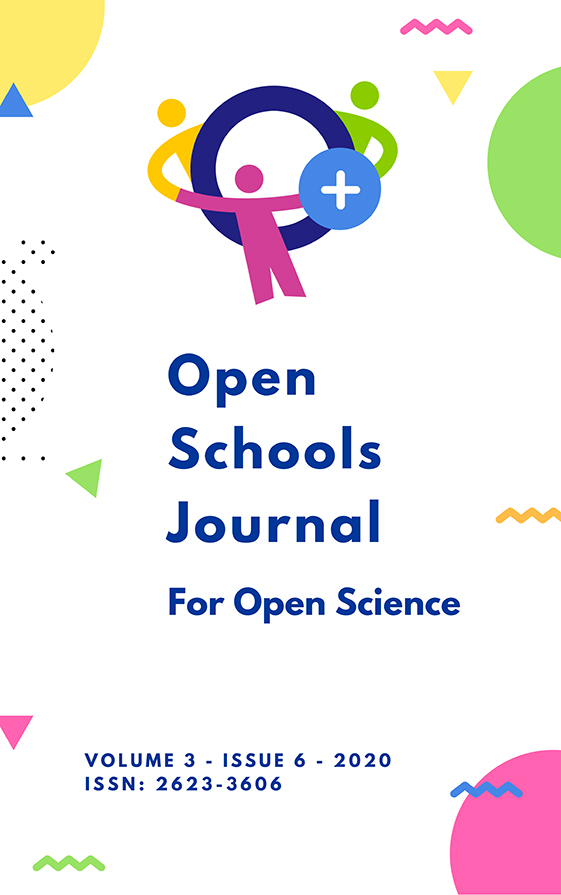Η Εκπαιδευτική Ρομποτική στην Υποστήριξη της Εκπαιδευτικής Διαδικασίας

Abstract
Στο παρόν κείμενο εστιάζουμε στην καταγραφή και περιγραφή της εμπειρίας μας με την εκπαιδευτική ρομποτική, όπως αυτή αποκτήθηκε στα πλαίσια του 1ουRobotics Workshop που πραγματοποιήθηκε στην Τρίπολη από σχολεία της περιοχής, το Δεκέμβριο του 20171. Μέσα από ένα ταξίδι διάρκειας 12 εβδομάδων, 15 μαθητές από δύο λύκεια της περιοχής της Τρίπολης, καταλήξαμε να παρουσιάσουμε σε 500 μαθητές, έργα ρομποτικής που δημιουργήσαμε επιστρατεύοντας φαντασία, δημιουργικότητα και ομαδική εργασία. Η θεματολογία μας
11οRobotics Workshop,τοποθεσία Τρίπολη, διοργάνωση 3οΓΕΛ Τρίπολης& ΓΕΛ Τεγέας, περισσότερα στον σύνδεσμο: https://goo.gl/MA2RWs
περιλάμβανε τεχνουργήματα με αξιοποίηση της πλατφόρμας Arduino καθώς και των Lego Mindstorms και γενικά έργα εκπαιδευτικών χρήσεων και εφαρμογών. Πιο συγκεκριμένα δημιουργήσαμε έργα αυτοματισμού, φωτισμού-ήχου, αισθητήρων-περιβάλλοντος, έξυπνα αντικείμενα, διατάξεις έγκαιρης ειδοποίησης, αυτόνομο όχημα, εφαρμογές ψυχαγωγίας και εφαρμογές ΙοΤ, αξιοποιώντας κυρίως γνώσεις Πληροφορικής αλλά και άλλων επιστημονικών πεδίων όπως η Φυσική.
Μέσα από το παρόν άρθρο θέλουμε να περιγράψουμε τη μοναδική αυτή εμπειρία που ζήσαμε και να επιχειρήσουμε να δώσουμε απάντηση στο πώς η ρομποτική και γενικά ο προγραμματισμός μέσω φυσικών πραγμάτων μπορούν να υποστηρίξουν τη μάθηση καλύτερα από παραδοσιακούς τρόπους. Η ενασχόλησή μας με τη ρομποτική, ενθάρρυνε την δημιουργικότητα μας, την επινοητικότητα και την πρωτοβουλία μας να λύσουμε τα όποια προβλήματα παρουσιάστηκαν.
Καταλήγοντας, η χρήση της ρομποτικής στην εκπαίδευση φαίνεται να έχει πολλαπλά οφέλη για τους μαθητές, καθώς συμβάλλει στην παραγωγή καινοτομίας και βοηθάει στην ανάπτυξη της αλγοριθμικής και κριτικής σκέψης των εμπλεκομένων, στην αλλαγή διαδικασίας μάθησης και της επικοινωνίας, όπως επίσης και στην διαμόρφωση στάσεων και επιλογών μελλοντικής επαγγελματικής σταδιοδρομίας.
Article Details
- How to Cite
-
Γκάνιος Α., Γρηγορίου Α., Δούλου Ν., Ζαχαρόπουλος Λ., Κατσιαρδής Γ., Μπιλίδα Δ., Παπαδόπουλος Π., Ρούσος Γ., Θεοδωρόπουλος Α., & Αγγελόπουλος Γ. (2020). Η Εκπαιδευτική Ρομποτική στην Υποστήριξη της Εκπαιδευτικής Διαδικασίας. Open Schools Journal for Open Science, 3(6). https://doi.org/10.12681/osj.24301
- Issue
- Vol. 3 No. 6
- Section
- Greece

This work is licensed under a Creative Commons Attribution-NonCommercial-ShareAlike 4.0 International License.
Authors who publish with this journal agree to the following terms:
Authors retain copyright and grant the journal right of first publication with the work simultaneously licensed under a Creative Commons Attribution licence that allows others to share the work with an acknowledgement of the work's authorship and initial publication in this journal.
Authors are able to enter into separate, additional contractual arrangements for the non-exclusive distribution of the journal's published version of the work (e.g. post it to a repository), with an acknowledgement of its initial publication in this journal.
Authors are permitted and encouraged to post their work online prior to and during the submission process, as it can lead to productive exchanges, as well as earlier and greater citation of published work (See The Effect of Open Access).


